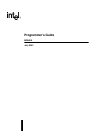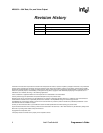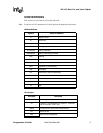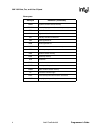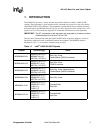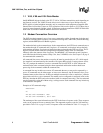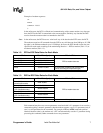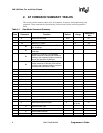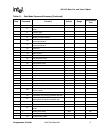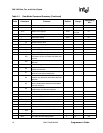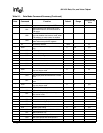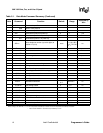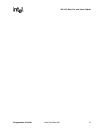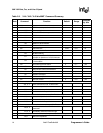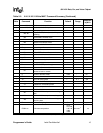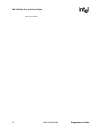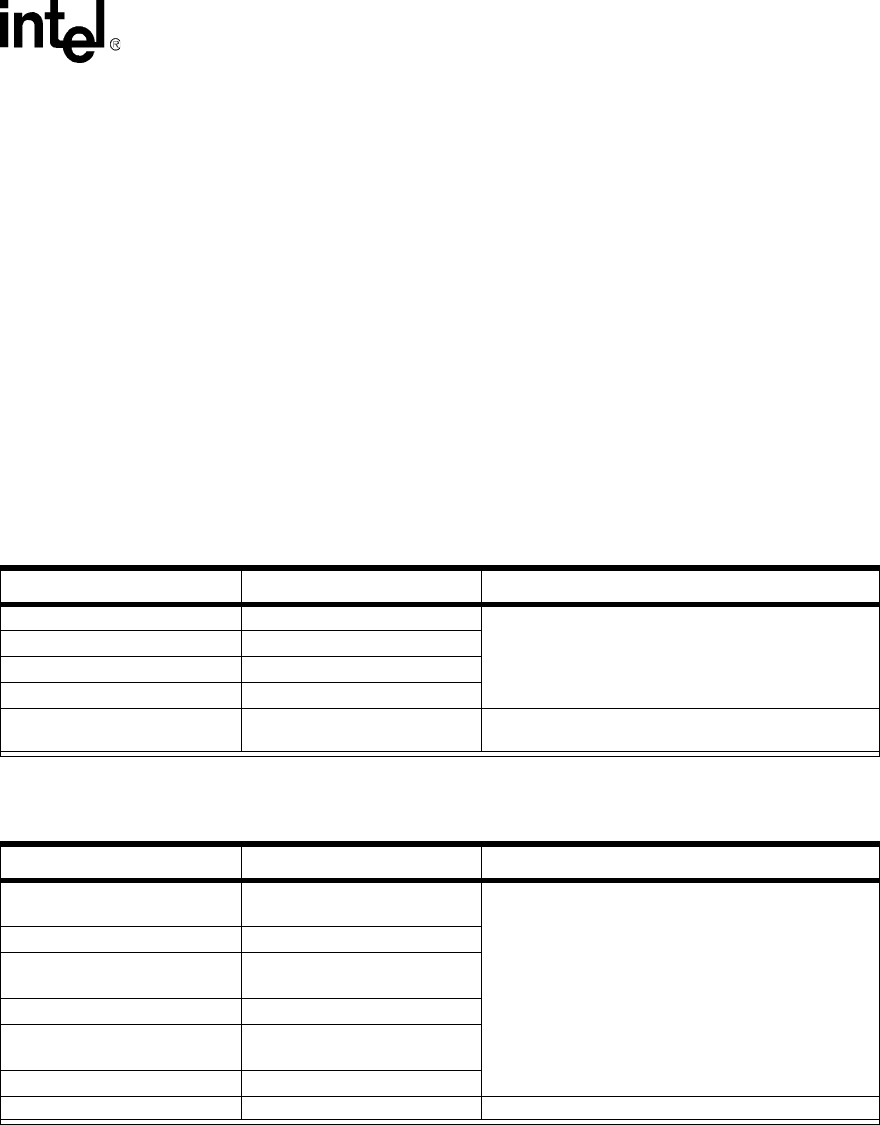
56K V.92 Data, Fax, and Voice Chipset
Programmer’s Guide Intel Confidential 7
Examples of modem responses:
OK
ERROR
CONNECT 28800
0
In the online state, the DCE is off-hook and communicating with a remote modem. Any data sent
from the DTE to the DCE is transmitted to the remote modem. Similarly, any data that the DCE
receives from the remote modem is transmitted to the DTE.
Note: In the online state, the DCE does not ‘echo-back’ any of the data that the DTE sent to the DCE.
The modem recognizes AT commands from the DTE at any valid data rate from 300 bps to 115,200
bps (that is, the modem autobauds up to 115,200 bps); however, the DTE should use the data rate
specified for each mode according to the transmitting direction — DTE-to-modem (Table 1-2) or
modem-to-modem (Table 1-3).
Each command may have one or more parameters associated with it. If a parameter is not sent for a
command requiring a numeric parameter, then the modem assumes a zero (“0”) parameter (only if
zero is a valid parameter for the command). For example, ATZ and ATZ0 commands perform
identical functions (that is, the modem sees ‘ATZ’ and automatically uses the ‘0’ parameter during
processing the command). Other commands do not use parameters.
Table 1-2. DTE-to-DCE Data Rates for Each Mode
Mode Data Rate (bps) Affected Data
Data (V.34) 2400–115,200
DTE-to-modem data rate
Data (V.90) 28,800–115,200
Data (V.92) 28,800–115,200
Fax 19,200
Voice 19,200–115,200
AT commands, playback and record modes
(varies according to compression type)
Table 1-3. DCE-to-DCE Data Rates for Each Mode
Mode Data Rate (bps) Affected Data
Data (V.34)
transmit and receive
2400–33,600
DTE-to-modem data rate
Data (V.90) transmit 4800–33,600
Data (V.90) receive
(ISP connections only)
28,800–56,000
Data (V.92) transmit 24,000–48,000
Data (V.92) receive
(ISP connections only)
28,800–56,000
Fax 2400–14,400
Voice Not applicable Not applicable



